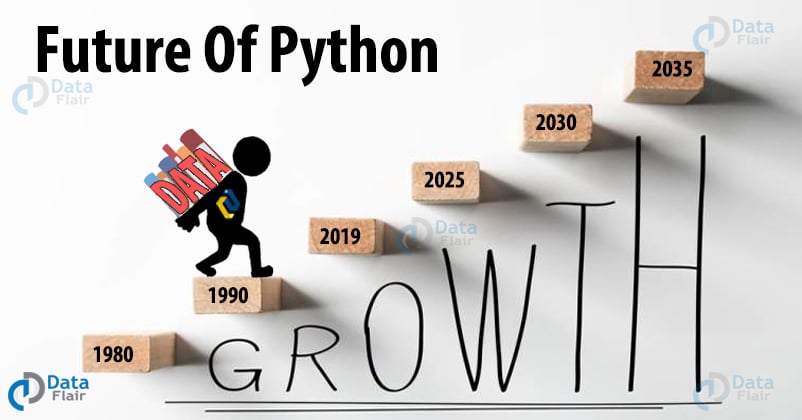Python Projects for 2025: Exploring the Future of Innovation
Related Articles: Python Projects for 2025: Exploring the Future of Innovation
- Innovative And Practical Baby Shower Favors For 2025
- 80th Birthday Party Ideas For Dad 2025: A Grand Celebration For An Octogenarian Milestone
- Ideals Vs Ideas Definition 2025
- 1600-Word Article On Boy Baby Shower Ideas For 2025
- Halloween Makeup Designs 2025: Unleash Your Inner Ghoul
Introduction
In this auspicious occasion, we are delighted to delve into the intriguing topic related to Python Projects for 2025: Exploring the Future of Innovation. Let’s weave interesting information and offer fresh perspectives to the readers.
Table of Content
Video about Python Projects for 2025: Exploring the Future of Innovation
Python Projects for 2025: Exploring the Future of Innovation

As we approach the year 2025, the world of technology continues to evolve at an unprecedented pace. Python, a versatile and widely-used programming language, is at the forefront of this evolution, empowering developers to create innovative and impactful projects. In this article, we delve into 10 groundbreaking Python project ideas that will shape the future of technology and provide a glimpse into the exciting possibilities that lie ahead.
1. Artificial Intelligence-Powered Chatbot
Develop a sophisticated AI-powered chatbot that can engage in natural language conversations, provide personalized recommendations, and assist users with complex tasks. Utilize advanced NLP techniques, machine learning algorithms, and deep learning models to create a highly intelligent and responsive virtual assistant.
2. Blockchain-Based Supply Chain Management System
Harness the power of blockchain technology to build a transparent and efficient supply chain management system. Track the movement of goods from production to distribution, ensuring product authenticity, provenance, and reducing fraud. Integrate smart contracts to automate transactions and streamline processes.
3. Machine Learning-Driven Predictive Analytics
Create a machine learning-based predictive analytics platform that can analyze vast amounts of data to identify patterns, forecast trends, and make accurate predictions. Utilize supervised and unsupervised learning algorithms to develop models that can predict future outcomes, optimize decision-making, and drive business growth.
4. Augmented Reality Mobile Application
Develop an augmented reality mobile application that enhances the user experience by overlaying digital information onto the real world. Create interactive virtual environments, provide real-time navigation, and facilitate immersive educational experiences. Explore the potential of AR to transform industries such as retail, healthcare, and education.
5. IoT-Enabled Smart Home System
Design an IoT-enabled smart home system that seamlessly integrates various devices and appliances. Control lighting, temperature, security systems, and entertainment devices remotely. Leverage machine learning to optimize energy consumption, enhance comfort, and provide personalized home automation experiences.
6. Cloud-Native Microservices Architecture
Build a cloud-native microservices architecture that decomposes a complex application into smaller, independent services. Utilize containers, Kubernetes, and serverless functions to deploy and manage these services efficiently. Enhance scalability, resilience, and maintainability by adopting a microservices approach.
7. Data Visualization and Analytics Dashboard
Create an interactive data visualization and analytics dashboard that enables users to explore and analyze data effectively. Use libraries such as Plotly, Bokeh, and Dash to generate interactive charts, graphs, and visualizations. Empower decision-makers with real-time insights and actionable information.
8. Natural Language Processing-Based Document Summarization
Develop a natural language processing-based document summarization tool that can automatically generate concise and informative summaries of large text documents. Utilize advanced NLP techniques, such as text mining, topic modeling, and abstractive summarization, to extract key information and create meaningful summaries.
9. Computer Vision-Powered Object Detection System
Build a computer vision-powered object detection system that can identify and classify objects in images and videos. Utilize deep learning models, such as YOLO and Faster R-CNN, to develop a real-time object detection system for applications such as surveillance, autonomous driving, and industrial automation.
10. Predictive Maintenance Platform
Create a predictive maintenance platform that leverages machine learning and IoT sensors to predict equipment failures and optimize maintenance schedules. Analyze sensor data, identify patterns, and develop predictive models to identify potential issues before they occur. Enhance uptime, reduce downtime, and improve operational efficiency.
These Python project ideas provide a glimpse into the future of technology and the transformative power of Python. By embracing these cutting-edge concepts and leveraging the versatility of Python, developers can create innovative solutions that address real-world challenges and shape the world of tomorrow.
![[IMGSRCTITLE2]](https://www.crio.do/blog/content/images/2022/01/5-Python-Projects.png)
![[IMGSRCTITLE3]](https://i.ytimg.com/vi/5pWo573zVj8/maxresdefault.jpg)
![[IMGSRCTITLE4]](https://www.i2tutorials.com/wp-content/media/2020/08/Top-10-Python-Deep-Learning-Projects.jpg)
![[IMGTITLE5]](https://www.logicraysacademy.com/blog/wp-content/uploads/2021/03/Python-project-ideas-Logicrays-academy-1024x576.jpg)
![[IMGTITLE6]](https://dz2cdn4.dzone.com/storage/article-thumb/13847683-thumb.jpg)
![[IMGTITLE7]](https://pythontimes.com/wp-content/uploads/2024/02/The-Future-Of-Web-Development-Exploring-PythonS-Role-In-Next-Generation-Web-Technologies.jpeg)
![[IMGTITLE8]](https://i.pinimg.com/originals/a9/f0/78/a9f0789ce8b49ab74d045e4f2ca10a2e.png)
![[IMGTITLE9]](https://i.ytimg.com/vi/pkm1h2X90Nc/maxresdefault.jpg)
Closure
Thus, we hope this article has provided valuable insights into Python Projects for 2025: Exploring the Future of Innovation. We thank you for taking the time to read this article. See you in our next article!